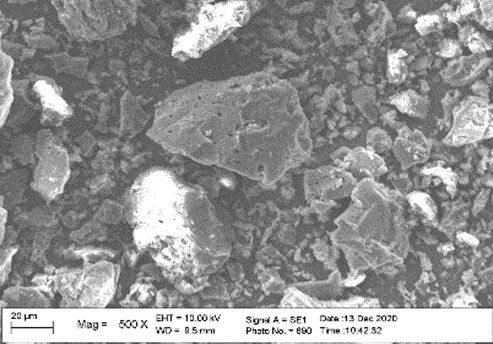Bio-oil Quality Based on Coconut Carbon Biomass Using Pyrolisis Method
Abstract
Coconut shells are biomass composed of carbon, hydrogen, oxygen, nitrogen, and other components in small quantities. Biomass can be converted into bio-oil via the pyrolysis method. Bio-oil resulting from pyrolysis has poor quality because it contains oxygen, acid compound, ketone, and ester. To improve the quality of Bio-oil, the pyrolysis process is carried out through a catalytic esterification reaction using a sulfonated H2SO4 coconut shell charcoal catalyst. Bio-oil synthesis is carried out at a temperature of 300–500 ℃. Coconut shell acid catalyst preparation was carried out by activation using HCl and followed by sulfonation of H2SO4 at a temperature of 150℃ for 12 hours. The catalyst was characterized using XRD, FTIR, and SEM. The bio-oil obtained was tested for density, kinematic viscosity, water content, pH, ash content, acid value, Bio-oil composition using GCMS, and metal content using ICP-OES. The results of catalyst characterization show that the formed solid carbon-based catalyst from coconut shells has a graphite crystal structure with a densely porous surface and contains sulfonate functional groups. The yield of bio-oil produced was 6.4%.
Downloads

Copyright (c) 2024 Rifa Ratnasari, Gladys Ayu Paramita Kusumah Wardhani, Agus Taufiq

This work is licensed under a Creative Commons Attribution-NonCommercial-NoDerivatives 4.0 International License.
Authors who publish with this journal agree to the following terms:
- Copyright on any article is retained by the author(s).
- The author grants the journal, the right of first publication with the work simultaneously licensed under a Creative Commons Attribution License that allows others to share the work with an acknowledgment of the work’s authorship and initial publication in this journal.
- Authors are able to enter into separate, additional contractual arrangements for the non-exclusive distribution of the journal’s published version of the work (e.g., post it to an institutional repository or publish it in a book), with an acknowledgment of its initial publication in this journal.
- Authors are permitted and encouraged to post their work online (e.g., in institutional repositories or on their website) prior to and during the submission process, as it can lead to productive exchanges, as well as earlier and greater citation of published work.
- The article and any associated published material is distributed under the Creative Commons Attribution-NonCommercial-NoDerivatives 4.0 International License.





_copy1.png)










